
Make a splash in your water garden this year by choosing water garden plants that are visually intriguing as well as functional.
When you make your selections, consider both the ornamental qualities and the practical value of each plant. A good combination will oxygenate the water, compete with algae to keep the water clear, and take up nitrogen to balance the pond’s ecosystem.
Before running out to buy water garden plants, make a plan. The number of plants you need will be limited by the size of your pond or container. The general rule is that plants should cover no more than 2/3 of the water’s surface.
It is important not to overcrowd your water garden. Good air circulation is needed to allow plants to flourish disease free. Plan on the small plants you start out with quickly growing and requiring more space.
Flowering plants come in every color and can be chosen to provide sequentially continuous bloom. Foliage plants can provide vertical interest and range in color from shades of green to copper, bronze and black. Many are variegated.
While the variety of plants available is increasing to meet the growing popularity of water gardening, the four basic categories remain the same. When deciding what you will plant in your water garden, be sure to include plants from each category.
Floating Plants
Floating plants float freely on the surface of the water and can be placed in all areas of the pond. They grow quickly and require periodic thinning. By shading the water with their leaves, they reduce the amount of light needed for algae to grow.
Examples of floating plants are Water Hyacinth, Water Lettuce, Sensitive Plant and Parrots’ Feather
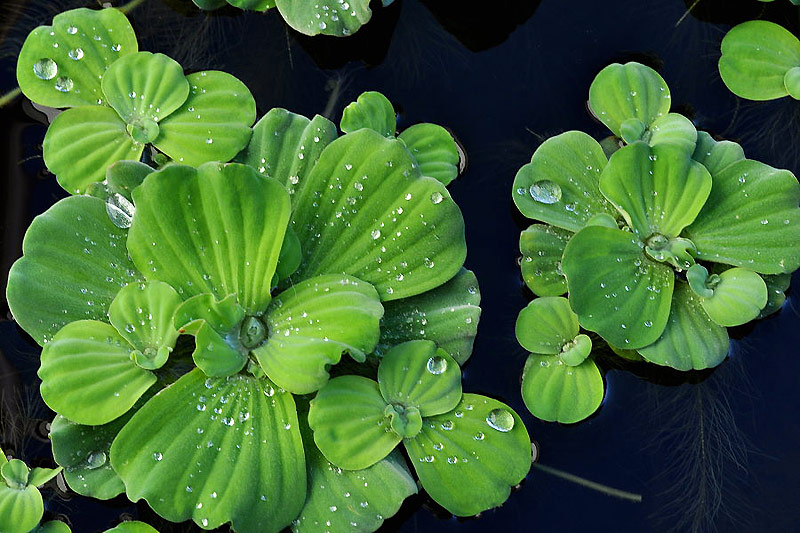
Water Lettuce
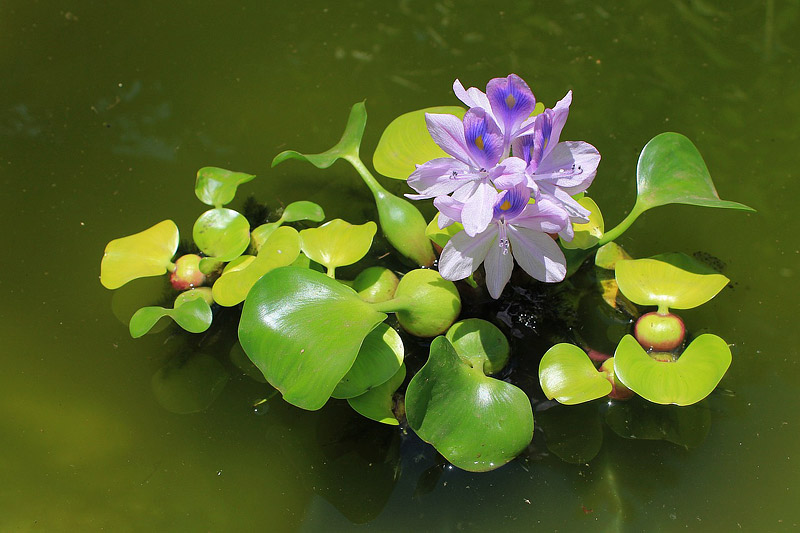
Water Hyacinth
Surface Plants
Surface plants have their roots in soil and leaves on long stems that float on the water’s surface. By blocking sunlight, they also inhibit the growth of algae.
Water lilies are surface plants. Tropical or hardy, they are easily grown and make great plants for the average pond or container water garden. Other surface plants include Lotus, Water Hawthorne, Variegated Four-leaf Water Clover, and Yellow Floating Heart.
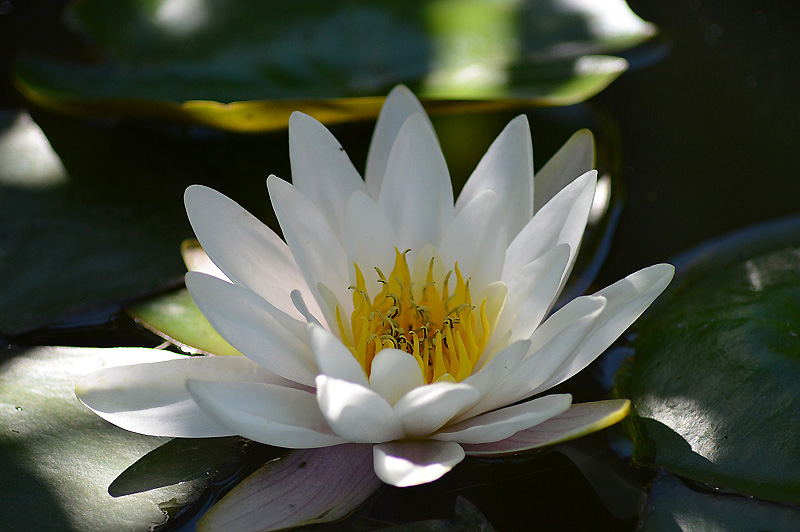
Water Lily
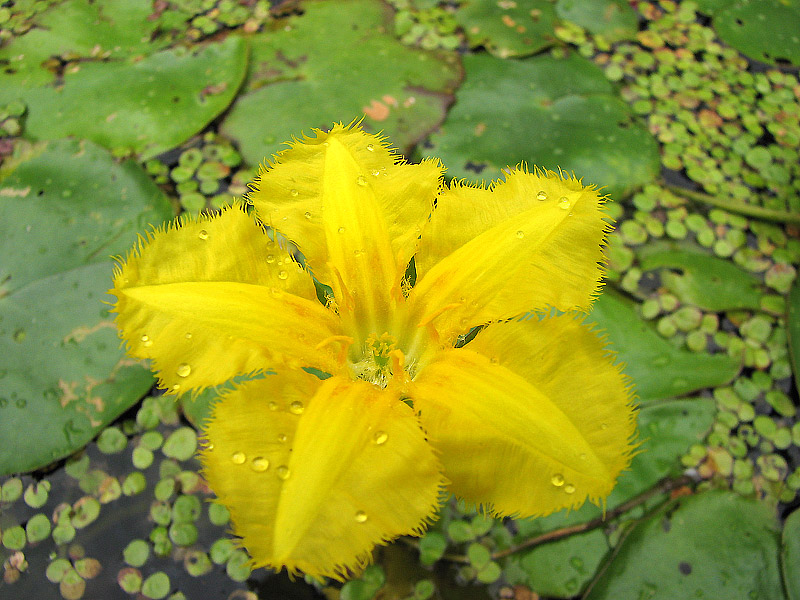
Yellow Floating Heart
Submerged or Oxygenating Plants
The leaves of submerged plants remain underwater, rarely protruding above the surface. They may root in soil or float freely. Fast growers, they will need thinning in smaller ponds.
These plants are important in maintaining the quality of the water in the pond. They produce oxygen for use by both plants and fish. By utilizing nitrogen produced from decaying plant material and fish waste products, they deprive algae of nutrients.
Submerged plants include Hornwort, Cabomba, Anacharis and Jungle Vall.

Hornwort
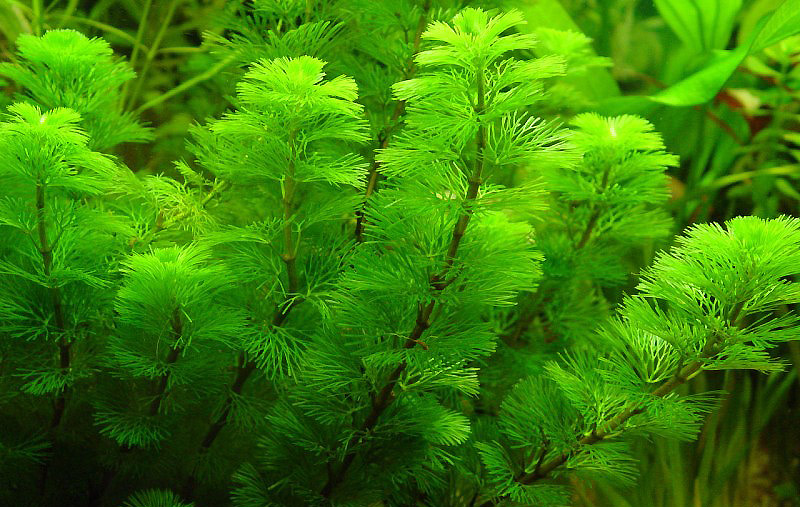
Cabomba
Marginal or Bog Plants
Marginal, or bog plants prefer their roots and lower parts submerged. They may be planted in the shallow areas of a pond or in very moist soil at the edge. In the pond, they compete with algae for available nitrogen.
Black Taro, with its large burgundy to black heart shaped leaves, contrasts well with the tall sword-like foliage of Sweet Flag or variegated Sweet Flag. Other interesting marginal plants include Zebra, Corkscrew and Horsetail Rush, aquatic Canna, purple or pink Pickerel Rush, variegated Water Celery, Cardinal Flower and Dwarf Cattail.
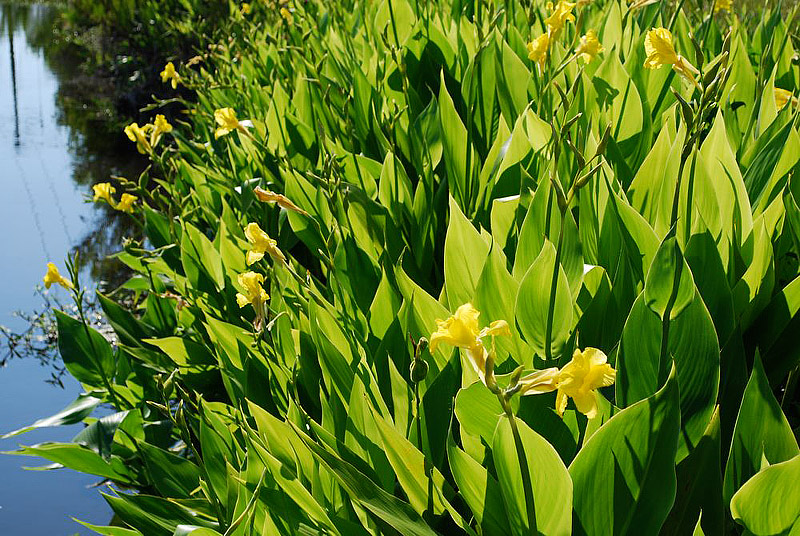
Aquatic Cannas
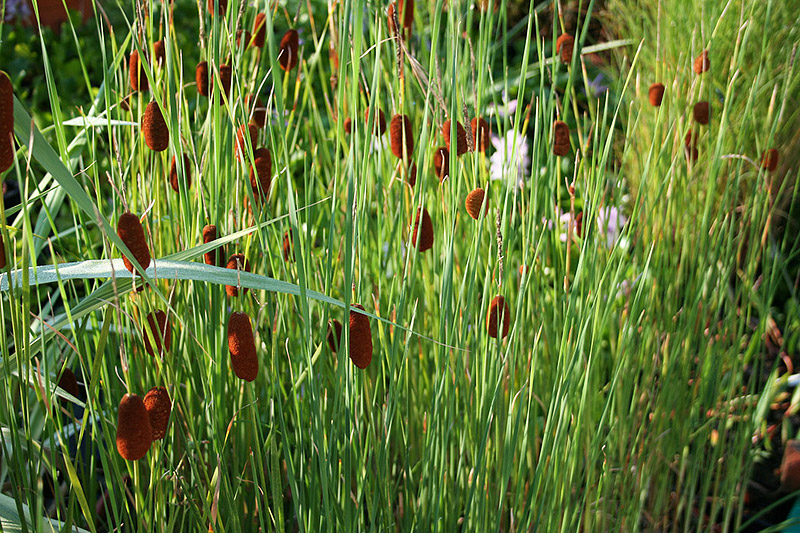
Dwarf Cattails
Be sure to purchase your plants from reputable suppliers. It is never a good idea to obtain plants from the wild. Many water plants found in the wild are rare and protected by law. By removing them from their natural surroundings you may endanger their survival and damage the delicate balance of the surrounding ecosystem.
Whenever possible, purchase plants from a local nursery. You can then examine the plant to be sure it is healthy. Check each plant for signs of insects or disease. Remove the plant from its pot and look at the root system. Roots should be white and firm, bulbs and tubers should be large, healthy and firm.


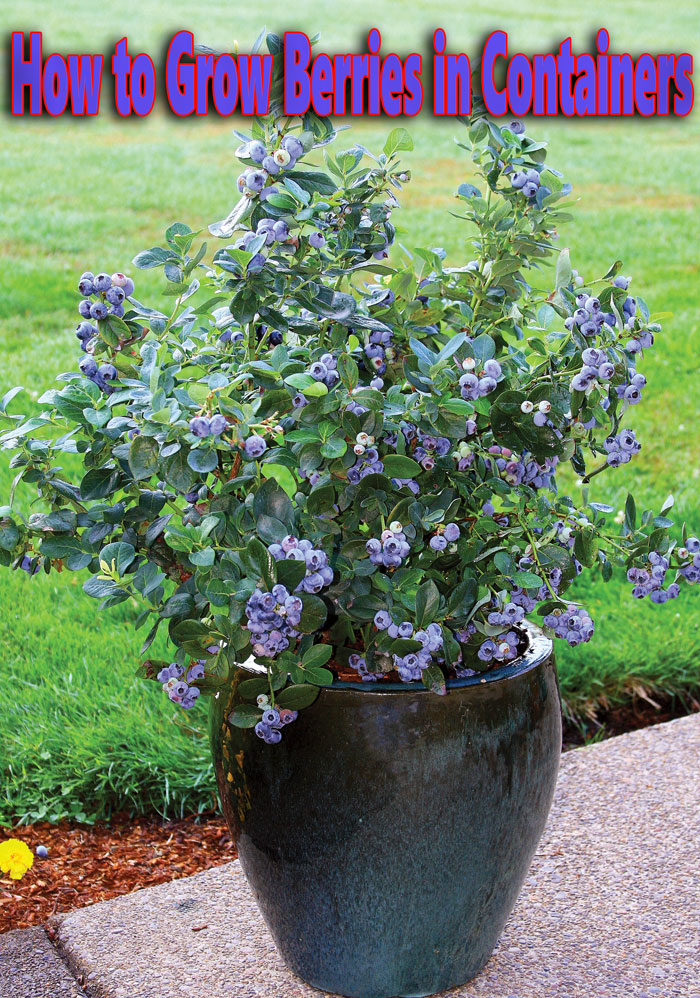
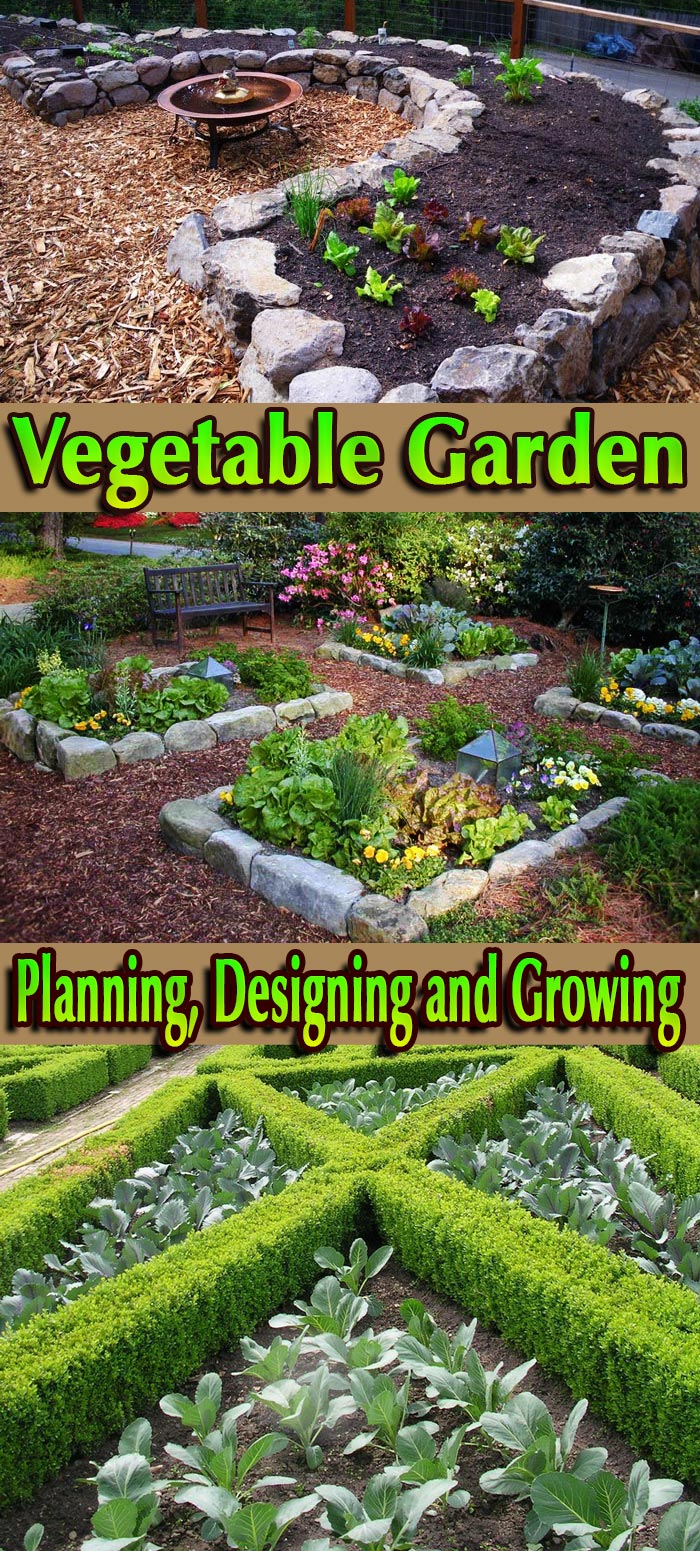
Leave a Reply